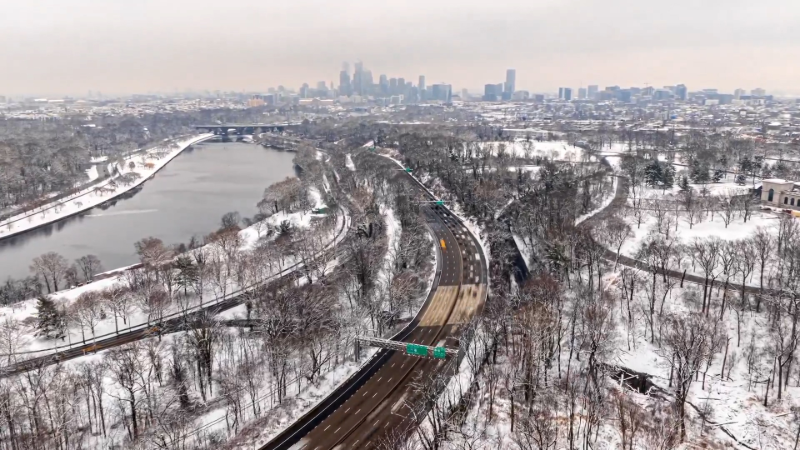Winter's back: Freezing cold in Midwest and blizzard fears in Northeast

If next week is winter's last hurrah, it's certainly going out with a bang – with frigid temperatures across the central U.S. and the potential for a major snowstorm in the Northeast.
Meteorologists agree that dangerous temperatures, as cold as -20 to -30 degrees in Chicago, are in the forecast. They're not yet sure how bad the brewing storm will be — some models signal a brewing blizzard, while some forecasters remain unconvinced it will be that bad.
First up, though: Freezing cold.
A blast of arctic air is making its way this weekend across the north-central U.S. before roaring toward the South and East early to middle next week.
"Your face will fall off at these temperatures," noted meteorologist Ryan Maue wryly on X.
"Dangerously cold wind chills and air temperatures will lead to cold weather headlines," the National Weather Service said, with extreme cold warnings possible in some areas.
Along with the cold will come the chance for a significant snowstorm, one that could eventually bring blizzard conditions to parts of the East Coast.
How cold will it get?
The cold air that's on the march from western Canada "means business in the central part of the country," said AccuWeather meteorologist Tom Kines on Friday. With temperatures that will be some 40 degrees below normal for February, it's a "pretty impressive batch of cold air," he said.
As is often the case, states such as Montana, North Dakota and Minnesota will bear the brunt of the cold blast by the early part of next week:
"The coldest mornings will be Monday and Tuesday when life-threatening wind chills are likely," the National Weather Service in Bismarck, North Dakota, warned. Actual temperatures could drop to as low as 40 degrees below zero, the weather service said.
30 below in Chicago?
Further south, in Chicago, temperatures are forecast to drop into the -20 to -30 degree range by Monday night. The arctic air will seep south over the central and southern Plains next week and will even reach into the South, including in Oklahoma City, Nashville and Atlanta, Weather.com said.
In Dallas, dangerous wind chill values Wednesday morning may dip below zero.
Are records possible?
Kines said that record cold will be possible in central part of the country, specifically in Missouri, Arkansas, Oklahoma and Kansas, where the weather service is already warning residents about protecting the four Ps: People, pets, plants and pipes.
Looking ahead to next week, the weather service in Tulsa said there's a chance that "extreme cold warnings will be needed for some places during this timeframe."
An extreme cold warning is issued when dangerously cold air temperatures or wind chill values are expected or occurring, the weather service said. "If you are in an area with an extreme cold warning, avoid going outside. If you have to go outside, dress in layers, cover exposed skin, and make sure at least one other person knows your whereabouts. Update them when you arrive safely at your destination."
Winter storm incoming
Weather models were cranking out big snow totals and meteorologists were abuzz Friday with the chances for for a major snowstorm next week:
"Excitement is increasing for blockbuster blizzard late next week across Northeast," Maue said, noting that the latest run of the European weather model "cripples the I-95 corridor."
Kines was more circumspect, admitting that "there will be a storm in the East next week" but that the question remains how far north it goes. He did say, though, that most of the precipitation that falls in the Mid-Atlantic will be snow.
The National Weather Service, in a Friday forecast, simply warned that a possible coastal storm would "threaten the East Coast from the Mid-Atlantic to eastern New England."
What is a blizzard?
A blizzard has a specific meteorological definition, according to the National Weather Service.
It's a storm that has blowing and/or falling snow with winds of at least 35 mph, which reduces visibilities to a quarter of a mile or less for at least three hours.
According to that definition, heavy snowfalls and severe cold aren't technically required for a blizzard. (Sometimes strong winds pick up snow that has already fallen, creating what's known as a ground blizzard.)
However, in popular usage, the term is often used for any heavy snowstorm accompanied by strong winds, the American Meteorological Society said.